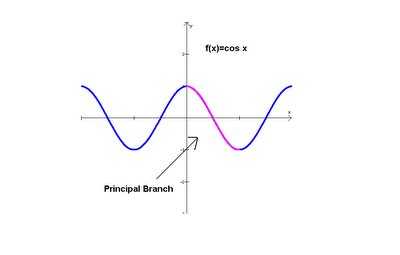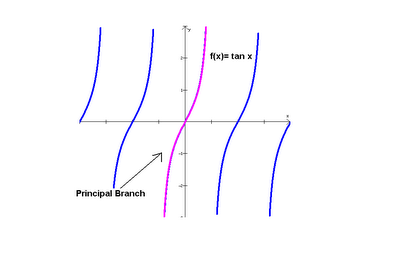Chapter 3, Lesson 7: Sinusoidal Functions as Mathematical Models
Main Objective: "To write an equation using sine or cosine functions and use the equation as a matematical model to make predictions and interpretations about the real world"
Using what we have learned in past chapters:
y=C + A(Sin or cos) (B(x or theta - D))
*use "X" when in radian mode
*use "theta" when in degree mode
C= sinusoidal axis (vertical translation)
A= amplitude (vertical dilation)
B= 360/period (horizontal dilation)
D= phase displacement (horizontal translation)
Radians converted to degrees: 180/pi
Degrees converted to radians: pi/180
Tip: After looking at the word problem decide if you should use sine or cosine.
Use sine: when you are dealing with the location of the midpoint of a graph
Use cosine: when you are dealing with the maximum of a graph
Tip: After looking at the word problem decide if you should use radians or degrees:
*Use radians: when you want to eliminate the confusion of having different units
Summary:
This lesson basically combines the things we have learned about sin and cos functions with what we have learned about radians and degrees and puts them in a real world situation, using circular graphs to depict situations that we need to translate into sinusoidal functions.
There are 2 graphs you might have to use in word problems:
A circle with P= point on outer rim, r= radius, d= distance to ground (ex. wheel problems) and the sinusoid graphs (sin and cos) we have learned about
Example:
Suppose that the waterwheel in the figure rotates at 6 revolutions per minute. Two seconds after you start a stopwatch, point P on the rim of the wheel is at its greatest height, d=13 ft, above the surface of the water. The center of the waterwheel is 6ft above the surface. 
a. Sketch the graph of d as a function of t since you started the stopwatch.
b. Assuming that d is a sinusoidal function of t, write a particular equation.
c. How high above or below the water's surface will P be at time t=17.5 sec?
d. At what time (t) was point P first emerging from the water?
Answer:
a. From the information we are given, you can tell that the sinusoidal axis is located at d=6 (this is the center of the waterwheel). Because you know the sinusoidal axis you can figure out the high and low points by adding and subtracting the amplitude (7).
6+7= 13 (high point)
6-7= -1 (low point)
Sketch the high point at t=2 because point P is at its maximum after 2 seconds
Because the waterwheel rotates at 6 revolutions per minute, the period is 60/6= 10 seconds, or 1 revolution in 10 seconds. This means you would mark the next high point at t=2 + 10=12
*Continue by marking a low point halfway between the two high points, and mark the points of inflection on the sinusoidal axis halfway between each consecutive high and low*
The graph should look like the following:
b. Remember: d=C+AcosB(t-D) As we can see from the graph, C=6, A=7, and D=2
Because the period of this sinusoid is 10, using radians the "B" would be calculated as 10/2(pi), which equals 5/(pi)
*Don't forget*- B is the RECIPROCAL of the horizontal dilation, therefore B= pi/5
Using the formula above you would write the answer as d=6+7cos((pi/5)(t-2))
c. Set the window on your grapher to include 17.5. Then trace or scroll to this point. By looking at the graph you can determine that d= -.6573 and is going up.
d. Point P is either submerging into or emerging from the water when d=0. At the first zero the point is going into the water. At the next zero, the point is emerging. Using intersect or zeros on your calculator you will find points at:
t= 7.8611...rounded to 7.9 seconds
For Additional Problems or help with Sinusoids in general (which can help you with sinusoidal model problems) go to http://www.nsa.gov/teachers/hs/trig16.pdf
This is a picture of my puppy Luna, who I'm raising to be a Guide Dog.

Landry, you are next! Good Luck!












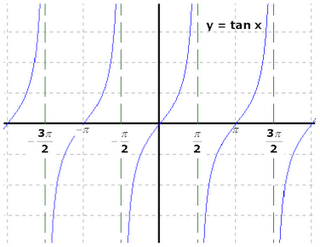
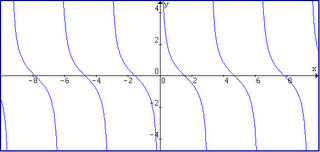






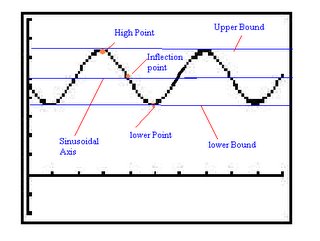
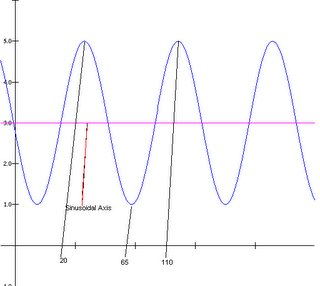 New max on graph becomes 20 then add the period to equal the next max at 110. 65 is the middle point between 20 and 110. The sinusoidal axis is at 3. To get the amplitude go up the amplitude (2) up and down from the sinusoidal axis and those points become the max. and min.
New max on graph becomes 20 then add the period to equal the next max at 110. 65 is the middle point between 20 and 110. The sinusoidal axis is at 3. To get the amplitude go up the amplitude (2) up and down from the sinusoidal axis and those points become the max. and min. 
